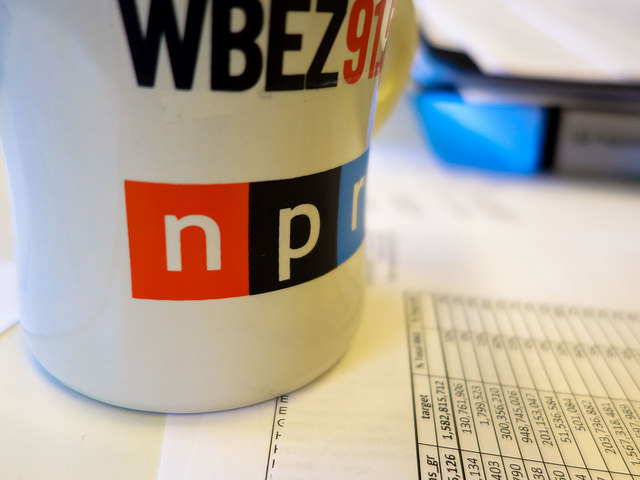This week WBEZ rolls out the first major changes to its programming since the station canceled The Afternoon Shift last summer. Longtime hits This American Life and Wait Wait … Don’t Tell Me are both bumped an hour later on Saturdays, Car Talk is coming off the air after nearly four years of repeats, and several new shows are being introduced, including The New Yorker Radio Hour, Freakonomics, and Bullseye with Jesse Thorn.
The changes come on the heels of a podcast boom and in the midst of WBEZ’s own much-hyped push toward digital as public radio sees its broadcast listener base age and wane. Adding a rotation of podcasts to its weekly lineup means two things for the local radio station: a continuing trend toward shows from outside of the city, and a bet that programs that have built an audience on the Web (Bullseye, Freakonomics) or are coming from legacy media (New Yorker) will find footing with Chicago listeners.
Historically WBEZ has incubated some of public radio’s most longstanding hits, including Wait Wait… Don’t Tell Me and This American Life, the latter of which has gone on to dominate the podcast field, hitting Time’s list of 2015’s 10 most popular podcasts and spawning several other hits. (We mapped some of them in our February issue.)
Although it wasn’t mentioned in last week’s WBEZ announcement, Bullseye, which will air at 10 p.m. on Saturday nights, is a particularly exciting addition. The show, which Thorn says has a couple hundred thousand listeners each week, draws comparisons to an NPR classic: “It’s like Fresh Air, if Fresh Air were into what I’m into,” writes an iTunes reviewer. Each episode has substantial, often intimate interviews (recent guests include Gillian Jacobs and Raffi), an “I Wish I'd Made That” segment with an artist/creator (exactly what it sounds like), and a closing monologue from Thorn.
Bullseye began long before the current podcast boom. The show—originally called The Sound of Young America—began in 2000 as Thorn’s weekly hour on the University of California Santa Cruz radio station and jumped to podcasting in 2004. By the time SoYA became Bullseye, in 2012, Thorn had created his own production company, Maximum Fun, that today produces more than 20 podcasts. In 2013, he inked a distribution deal with NPR, and now Bullseye airs on more than 50 stations.
On the shifts that have brought Bullseye and other podcasts to Chicago, Thorn argues that the new audio landscape demands change. “Public radio has sort of relied on the fact that it was the only game in town if you wanted to do something that wasn't dumb,” says Thorn. “And that is no longer the case. A lot of the best talent are struggling to find pathways forward, and instead of sticking around and complaining, they’re just like, 'Okay, well, later, I'm going to go make my own thing.’”
Can public radio still retain talent when DIY is such an available option?
WBEZ’s vice president of programming and content Ben Calhoun thinks so. “People are drawn to [public radio] because they want to make really meaningful, high quality work that people connect with. I think, in the marketplace we’re looking at right now, our people and our culture win out.”
But Calhoun, himself a veteran of This American Life, also has an eye on listeners. “If people are turning away from us at particular times, we feel like they’re telling us we need to do better.” His decision to drop Car Talk is one that many in the public radio universe—including This American Life host Ira Glass—have pushed for since the show stopped producing new episodes in fall of 2012. “At some point," Thorn says, "you have to ask yourself, Is running multiple repeats of a legacy show the best service for our audience?”
And Calhoun points out that fans can still find Car Talk online. Indeed, as podcasts become part of the radio landscape, so can radio shows—even dormant ones—find audiences via podcasting. "We live in a time when people want to hear what they want when they want it," says Calhoun.
WBEZ’s challenge, then, is to ensure that what it’s listeners want can be heard on 91.5 FM.




